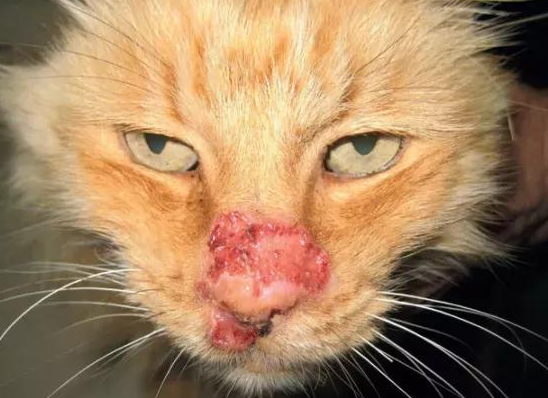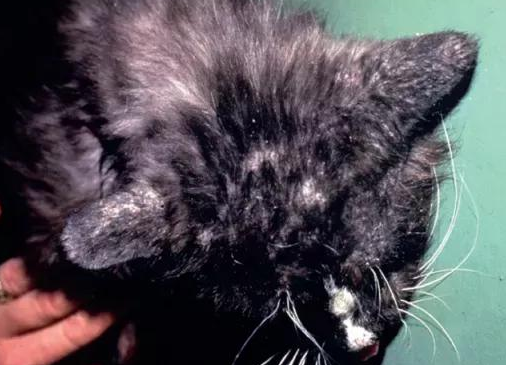Some pooper scoopers may have such doubts, obviously the cat is only a skin disease, do a skin check on it, but the results are required to do blood tests, check the endocrine.Are these practices reasonable or not?

In fact, whether it is a cat or a human, all organs of the body are inextricably linked. Although most of the time cat skin diseases can be detected by a simple skin examination, there are many exceptions.
Some internal diseases may also cause the cat to show abnormalities in the skin, and in this case, the “headache to cure the headache, the foot to cure the foot” may not be so good, the doctor needs more tests to assist in finding the original cause.
So, which skin manifestations are not so simple, and which internal problems may trigger skin symptoms? Take a look!
01 Feline rhinotracheitis virus infection
The feline rhinotracheitis virus is familiar to all poopers as the feline herpes virus.
The main clinical symptoms caused by the herpes virus are believed to be well known, such as sneezing, runny nose, watery eyes and other symptoms of upper respiratory illness…
However, in addition to these, FHV-1 may also cause some less common skin symptoms such as eosinophilic ulcers, blepharitis, facial dermatitis, etc.

02 Feline culex virus
Feline culexvirus (FCV) is also the causative agent of upper respiratory tract infections in cats and kittens.
Its main symptoms may also manifest on the skin, such as ulcers on the nasal turbinates and swollen or broken foot pads (VS-FCV).
It may also induce oral mucositis, mouth ulcers, etc.
Like herpes virus, cu-viruses have a high rate of infection in cats, so don’t forget to consider cu-viruses when your cat shows these abnormalities!
03 Feline leukemia virus
Feline leukemia virus (felV) is an RNA retrovirus that can be transmitted through saliva, feces, secretions and breast milk.
Clinical signs of FelV infection vary widely among cats and a large proportion of cats may also have no abnormal clinical signs.
FelV can affect the skin through cytostatic effects, and skin-related clinical signs include chronic or recurrent gingivitis, pyoderma, poor wound healing, seborrhea/exfoliative dermatitis, generalized pruritus, and skin horn formation. Because of the immunosuppressive effect of FelV on the organism, cats have an increased probability of developing other skin problems (e.g., helminth infections, Malassezia dermatitis, etc.).

04 Cat HIV
Similar to FelV, feline immunodeficiency virus (FIV) is a retrovirus that causes a variety of cytostatic diseases.
The common skin symptoms it induces are: chronic or recurrent abscesses, chronic bacterial infections of the skin and ear canal (pyoderma and otitis externa), etc.
There is an increased risk of Cryptococcus neoformans, Candida albicans or microsporidial infections and helminthic mites, and the risk of developing mast cell tumors may be higher.

